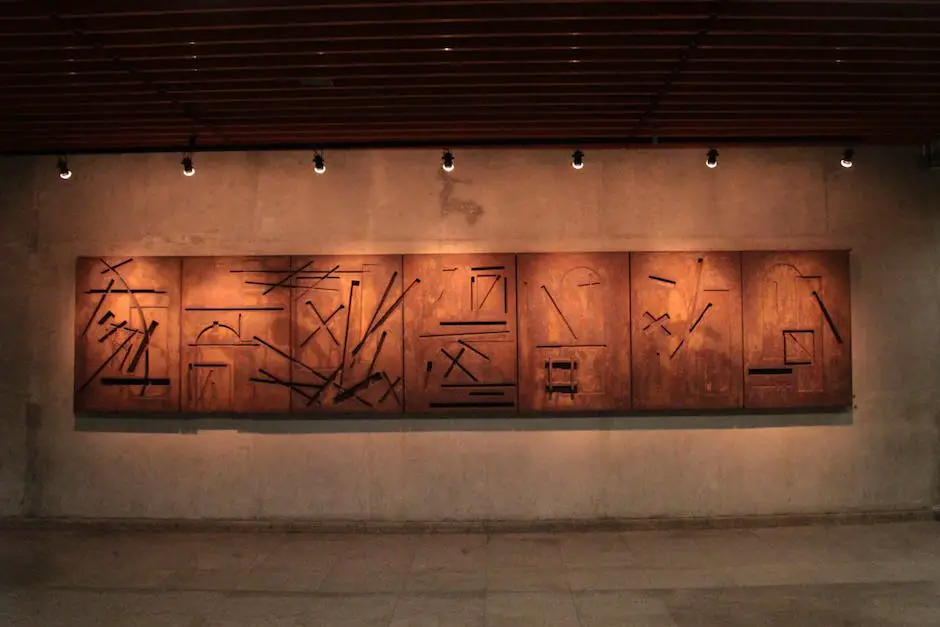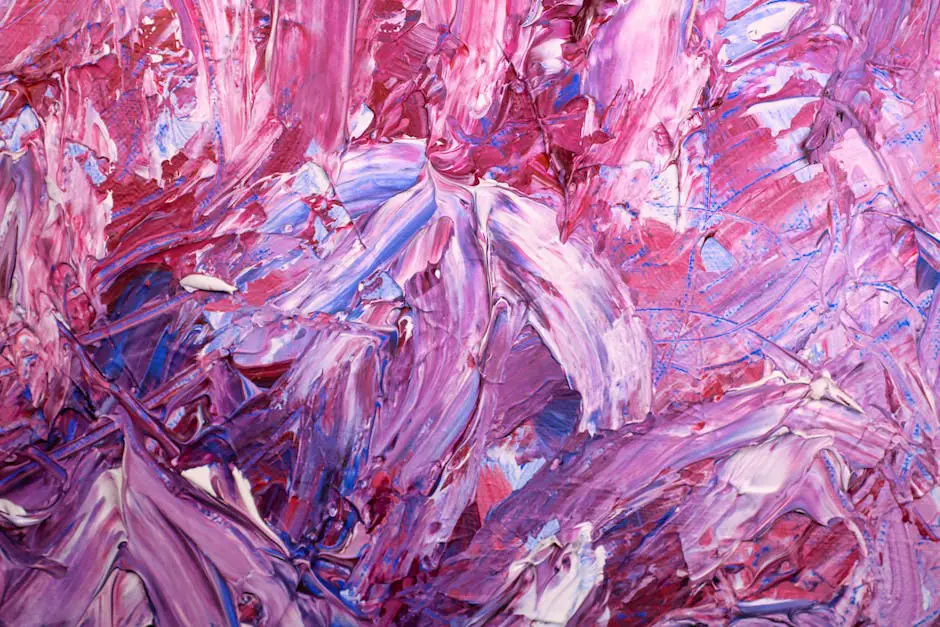In the kaleidoscopic landscape of 20th-century art, no figure shines brighter than that of Pablo Picasso. An inexhaustible innovator whose prodigious creativity spanned over seven decades, Picasso irrevocably altered the manner in which we perceive the world around us. Rooted in a profound exploration of his Blue and Rose periods, this exposition delves deep into his oeuvre, dissecting the essence of his transformational foray into Cubism, and his audacious manipulation of reality. Further, an examination of Picasso’s diverse array of materials and tools will seek to illuminate the inscrutable mind of this visionary and his relentless pursuit of artistic innovation.
Picasso’s Blue and Rose Periods
If woven into the fabric of an artist’s life, the threads of profound periods of growth can significantly influence their practice. Each artist is made up of a quilt of inspirations, influences, experiences, and individual processes. These elements form a beautiful mosaic of creative expression. Perhaps one of the most distinctive illustrations of such a journey is that of Pablo Picasso, a Spanish painter renowned for his contributions to 20th-century art.
Both Picasso’s Blue and Rose periods played integral roles in shaping Picasso’s developing art techniques. Let’s delve into Picasso’s world during these periods and uncover the profound influences they had on his artistry.
Embodying Tragedy: Picasso’s Blue Period
Picasso’s Blue Period, ranging from 1901-1904, became treasured for its poignant portrayal of societal outcasts. His focus on society’s lifetime losers – beggars, prostitutes, drunks – using cold, somber shades of blue and green instilled a level of sympathetic empathy in his work. The figures in these paintings conveyed a profound sadness enhanced by Picasso’s distorted depictions, a technique that later became a signature of his style.
The Blue Period was heavily influenced by his travels in Spain and France, where he encountered societal fringes and experienced personal tragedy – the suicide of his close friend, Carlos Casagemas. These experiences became reflected in his work, effectively evolving his technique to convey complex emotions and circumstances, a critical element in Picasso’s future pieces.
Evolving Pastels: Picasso’s Rose Period
As opposed to his Blue Period, Picasso’s Rose Period from 1904-1906 bore a more cheery and upbeat quality. The shift in colours was reflective of his relocation to Montmartre in Paris, where he admired the liveliness of Parisian life, the circus world, and even the community of fellow artists.
During this period, Picasso’s colour palette shifted towards warm hues of pink, red, and orange, while his subjects were clowns, acrobats and harlequins. There was a palpable evolution in Picasso’s technique as he played with form and space in an increasingly abstract manner, a trend that would foresee his movement towards Cubism.
A Newfound Complexity: Influence of Both Periods
The experiences and explorations of Picasso’s Blue and Rose periods considerably influenced the expansion of his art techniques. His amplified use of colour symbolisms during these stages became a highlighted characteristic of his work. They not only defined his mood and thematic focus but also demonstrated his control over the power of colours to evoke certain emotions.
Moreover, the subjects of his art during these periods — the vulnerable outcasts, the vibrant circus performers — marked a move towards depicting complex human conditions, giving Picasso’s art a sense of narrative realism that struck a chord with its viewers. This, in turn, enriched Picasso’s future pieces with a depth and complexity that transcended the mere visual aspect of the art.
In a nutshell, Picasso’s Blue and Rose periods significantly set the foundation for his evolving art techniques. These periods displayed Picasso’s extraordinary ability to adapt and evolve, something ingrained in the DNA of every great artist. The potential to match revealing, emotional understanding with evocative form and colour set Picasso on his journey to artistic maturity and ultimately, his contribution to the birth of abstract art. These significant facets of Picasso’s style offer artists of today a valuable lesson – to continuously explore and absorb experiences from life’s spectrum, thereby shaping a vibrant and effective creative voice.

Analyzing Cubism
Artistic Evolution: Picasso’s Journey into Cubism
A journey into the essence of Picasso’s work must necessarily brush against his immersion into the realm of Cubism. As we walk through the footprints of his creative evolution, from the Blue and Rose periods, a saga rich with depth and transitions, we find ourselves gaping at the precipice of a new era; a seismic shift in artistry that turns the spotlight on Cubism.
Rupturing the shackles of traditional perspective, Picasso in collaboration with Georges Braque, introduced Cubism in the early 20th century. This avant-garde movement blurred the edges of fixed perspective and expanded the canvas of visual representation, thus revolutionising the very fabric of art.
In essence, Cubism centred around the deconstruction of three-dimensional forms into two-dimensional shapes, presenting multiple perspectives simultaneously. The game was changing; a traditionally linear artistic presentation had been superseded by a complex and multifaceted scene.
Picasso’s ‘Les Demoiselles d’Avignon’ marked the trailblazing moment of his Cubist exploration. The painting dismisses conventional depictions of form and perspective, disassembling the female figures into fragmented shapes. The Demoiselles provoke the viewer to delve into a fragmented reality, undermining a singular viewpoint. This marked a departure from the realistic renderings of his Blue and Rose periods, propelling him into uncharted artistic territories.
Manipulating form and space, Picasso’s Cubist paintings are not singular snapshots in time, but dynamic amalgamations of multiple viewpoints and time frames, portrayed on a single canvas. The spectator is invited to indulge in a game of perception, where the lines between reality and representation blur.
Drawing inspiration from African masks and sculpture, Cubist aesthetics employed geometric abstraction and flattened two-dimensional planes. Picasso’s painting ‘Girl with a Mandolin’, echoes these principles, with the female figure and the instrument dissected and rearranged into abstract geometric shapes.
During his Synthetic Cubist period, Picasso went a step beyond, incorporating collage elements into his works. His breakthrough painting, ‘Still Life with Chair Caning’, amalgamates a myriad of unconventional materials, such as rope, fabric, and newsprint. This juxtaposition of assorted textures adds an unprecedented dimension to the canvas, undermining the boundary between painting and reality.
Picasso’s exploration of Cubism ignited a paradigm shift in nature of representation. It challenged the age-old dictum of art being a mere reflection of reality, and reframed it as the artist’s perception of reality. This novel perspective breathed life into the static canvas, shifting its role from passive depictions to dynamic narratives of artist’s interaction with the subject.
Undeniably, Picasso’s immersion into Cubism ruptured the art world’s traditional parameters and presented an innovative trajectory into the ingressive realm of abstract art. His Cubist journey forms an integral part of his artistic oeuvre, shaping his legacy as a maverick who dared to see the world not as it is, but as he perceived it. Through his cubist creations, Pablo Picasso redefined the very essence of creation itself, leaving an indelible imprint on the canvas of art history.
Whilst engaging with Picasso’s repertoire of work, contemporary artists must take heed, for embedded in his Cubist explorations is an invitation to probe beneath the surface, to perceive and represent multiple facets of reality, and to envisage art not just as a process of creation, but as a profound dialogue with perception.

Picasso’s Interpretation of Reality
Surfacing from the interludes of his creatively poignant Blue and Rose periods, Picasso’s artistic voyage propelled him towards an innovative worldview. Cubism, a groundbreaking movement co-founded by Picasso, dissected the shackles of traditional art, setting the stage for a revolutionary depiction of reality.
Picasso’s ‘Les Demoiselles d’Avignon’, a seminal work, marked the genesis of what would later be termed as Cubism. With fragmented figures intertwining geometry and disjointed spatial angles, Picasso dismissed conventional norms, liberating form and composition into a daring new vision of reality.
At the nucleus of Cubism lies the deconstruction of three-dimensional forms into two-dimensional shapes. Picasso swerved away from the mimetic discipline of art, instead advocating a visual language that translated multiple perspectives into a single plane. By juggling several viewpoints, he could simultaneously reveal the front, side, and back of a subject – a bold rendition of reality that opened a Pandora’s box of artistic possibilities.
Embracing this transformative style, Picasso’s shift to the revolutionary was not without significant influences. The unequivocal aesthetic of African masks and sculptures found its way into his art, reverberating through the angular features and mask-like faces of many Cubist creations. The simplified shapes and contours of these artefacts propelled Picasso’s exploration out of realism’s confines, launching him into the lap of abstract representation.
However, Picasso’s evolution didn’t end with the early phase of Cubism, also termed as Analytic Cubism. He emboldened his artistic grammar, ushering in the era of Synthetic Cubism. This can be seen in his incorporation of collage elements, where everyday items were incorporated into artworks, fabricating yet another layer of reality. Pioneering the usage of fabricated textures and patterns, Picasso transgressed boundaries, blurring the lines between high art and popular culture.
With his brush, Picasso restructured reality. His works sent tremors through the art world, transforming the perception of representational art. Breaking away from established conventions, he fostered a paradigm shift by challenging the very nature of representation through Cubism – reminding us that reality is not merely what has been seen, but what can be conceived.
The legacy that Picasso bequeathed to the world resounds not just in galleries and auction houses but resonates in the dawn of any artist picking up a brush, a chisel, or a stylus. He redefined the essence of creation, encouraging us to question, experiment, and innovate.
In the works of contemporary artists who strive to liberate their expression and reimagine reality, contains an inherited echo of Picasso’s ethos. They continue to explore the all-encompassing, multi-dimensional perceptions of reality that Picasso unearthed with his interpretation of form and space. In Picasso’s aesthetic labyrinth, artists find the audacity to transgress conventional boundaries, creating their unique visual symphony. So, the invitation is open – dare to surpass reality’s viewpoint, in the pursuit of Picasso’s legacy.

Techniques and Materials
Unleashing the Toolkit of Creativity: Picasso’s Eclectic Methods
Beyond the Blue and Rose periods, the extraordinary Pablo Picasso broke even more traditional boundaries and staked an indelible claim in the terrain of modern art through his co-foundation of Cubism. The significance of this groundbreaking movement lay largely in Picasso’s refusal to be bound by perspective. Form, for Picasso, became a rich playground where fixed realities could be deconstructed and re-imagined. Nothing was off limits, nothing was too sacred to rework.
Imagine viewing an object from every angle, then laying every perspective onto a flat canvas. This unfathomably intricate undertaking was essentially Picasso’s ambitious vision of Cubism. Take ‘Les Demoiselles d’Avignon’, a seminal work that pioneered the Cubist movement. Its shocking, angular figures represented a seismic shift away from the conventional depiction of the human figure, adding a profoundly innovative layer to Picasso’s portfolio.
Further cementing Picasso’s role as an artistic groundbreaker was his seamless integration of external influences into his art. The curvature and abstraction of African masks and sculptures, for example, were a significant source of inspiration for the geometrical innovations of Cubist aesthetics. More broadly, they contributed to Picasso’s reshaping of form and space in his art.
Another transformative phase of Picasso’s ever-evolving creative journey came with the introduction of Synthetic Cubism. His experimental spirit led him to incorporate previously unthinkable materials into his artworks. The humble object of everyday life – a piece of newspaper, a scrap of wallpaper – was given a new lease of life, transformed into a part of Picasso’s stunning artistic tapestry. This was an unprecedented infusion of ‘reality’ into art, and in a sense, brought art closer to day-to-day experience.
With this shift towards synthesising, Picasso turned representation on its head. His approach moved from an analytically detailed breakdown of forms to a layering, building, and ironic simplification. It was a new way of seeing, a unique lens through which he interpreted the world – and how he invited the world to interpret his work.
And so, the Picasso effect was coined – an artist who reimagined and redefined the essence of creation, forging a legacy of innovation and artistic courage that persists to this day. The textured layers of his broad body of work, from the melancholy blues to the warm hues of the Rose Period and the groundbreaking Cubism, have left an indelible imprint on the field of contemporary art. His ethos, to see the world from a multitude of perspectives and experiment without boundaries, resonates with contemporary artists who are determined to tell their own stories and reshape reality through their unique artistic expressions.
From embracing pain during the Blue Period, celebrating joy during the Rose Period, to further pioneering Cubism, Picasso’s incredible journey was fuelled by an unquenchable thirst for exploration. He reminds us that the creative palette knows no boundaries and that the canvas of life is a fantastical playground where a multitude of stories can be painted, stories that captivate, resonate, and inspire for generations to come. Picasso, with his indefatigable spirit, unlimited creativity, and audacity to challenge the known, will forever be one of the brightest stars in the constellation of art.

Imbued with an extraordinary ability to marshal a disparate range of materials and methods into his artistic narrative, Pablo Picasso tore down and rebuilt the very foundations of art. His audacious forays into Cubism, his reinterpretation of reality through form and figure, and his nuanced navigations through the Blue and Rose periods, all reflect the influence this master has had on the tectonic plates of art history. Entwining intellectuality with primitivism, his craft offers a window into a complex synergy of passion, philosophy, and unparalleled creativity. Each brush stroke, a statement; each abstraction, a portrayal of his perception of life – a dance between provocation and poignancy embodied in his exceptional oeuvre.
Recommend0 recommendationsPublished in Uncategorized



Responses